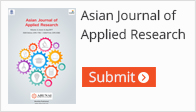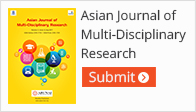Economical and Eco-friendly Wastewater Treatment Using Anatase TiO2
T. Vijayalakshmi1, G. Elango1, S. Guhanathan2| Journal Title | : | Asian Journal of Applied Research |
|---|---|---|
| DOI | : | DOI: http://dx.doi.org/10.20468/ajar.2018.12.01 |
| Page No | : | 01-08 |
| Volume | : | 4 |
| Issue | : | 12 |
| Month/Year | : | 12/2018 |
Keywords
Abstract
Proliferating awareness of health, economic benefits, and green environment is required in the polluted world. From the peril of water pollution, novel method of wastewater treatment is required. Nanotechnology is found to be a more efficient process while comparing with other traditional process. Among the other nanoparticles, titania is ideal for wastewater treatment. It involves photocatalytic reaction. Nano titania was prepared by the sol-gel method. It was characterized by scanning electron microscopy (SEM) and X-ray diffractometer analysis. Lowcost, eco-friendly activated carbon was synthesized from wood apple (WA) outer shell composite by conventional chemical process. Activated WA was analyzed by Fourier-transform infrared and SEM. Both Nano titania and WA were treated with collected samples. Their parameters were investigated. Nano titania was found to be more potential than WA. Adsorption process was one among the method used for wastewater treatment in removal of dye. Methylene blue was a major pollutant due to its enormous use in the textile industries. Their adsorption capacities were studied by batch experiment. The adsorption efficiency of WA was determined by measuring the percentage removal of color. The effect of contact time, concentration of dye, temperature, stirring speed, and kinetics was studied. Nano titania is more efficient for the treatment of wastewater discharge from household and industries.


